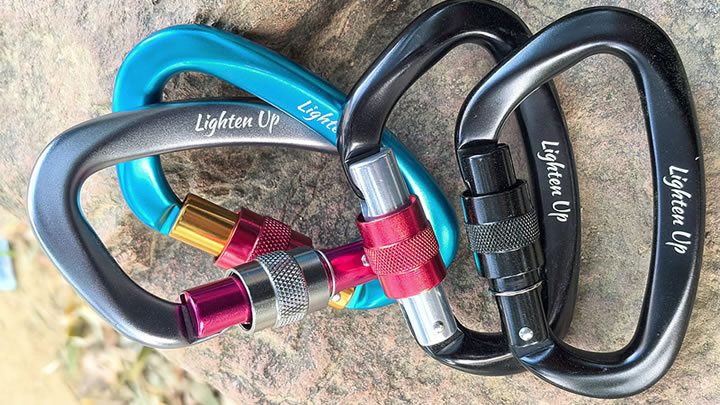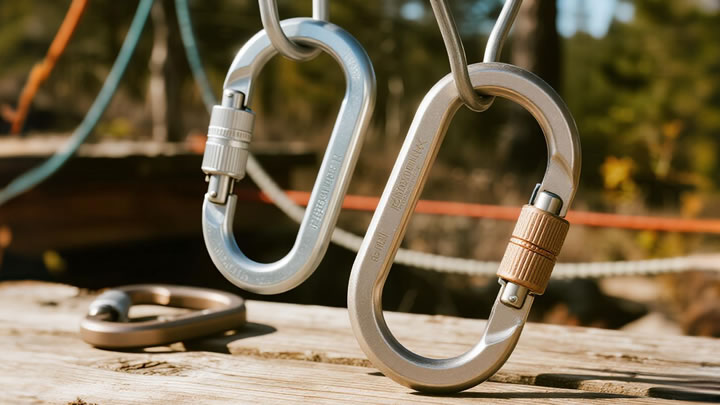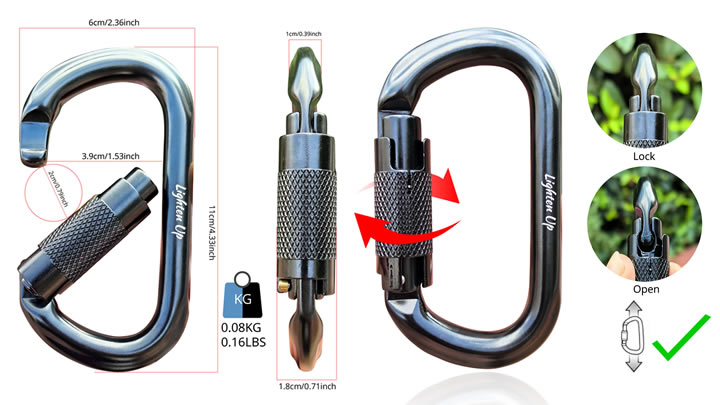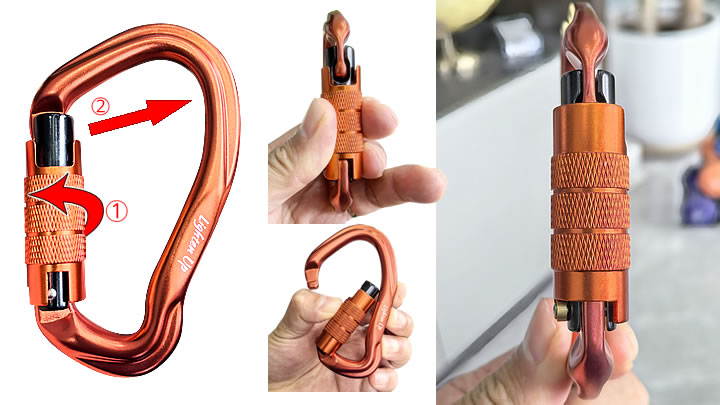Best Carabiner Hook for Climbing and Outdoor Sports
Selecting the "best" carabiner for climbing and outdoor sports is not about finding a single perfect model, but rather identifying the right tool for specific applications. Your ideal choice will depend on the sport, your personal style, and the critical balance between weight, strength, and security. Understanding the key categories is the first step to making an informed and safe decision.

1. The Workhorse: Screw-Lock Carabiners
For the vast majority of climbers, a standard screw-lock 'D' shaped carabiner is the most versatile and reliable choice.
- Security: The manually threaded sleeve provides a robust, predictable lock that is highly resistant to accidental opening from snags or impacts. Its locked status is also easy to verify visually.
- Strength & Efficiency: The 'D' shape efficiently directs load onto the strong spine, offering a better strength-to-weight ratio than oval shapes. They are the ideal choice for belay devices, anchor building, and as the rope-end carabiner on quickdraws where you need reliable clipping.
- Best For: Trad climbing, alpine climbing, belay loops, and general-purpose use where security is the top priority.
2. The Sport Climbing Specialist: Quickdraws and Wire-Gates
For sport climbing, performance is defined by weight savings and easy, one-handed clipping.
- Wire-Gate Carabiners: These are the standard for sport climbing quickdraws. Their lightweight, springy wire gates are less prone to "gate flutter" (a high-frequency opening during a fall that can momentarily weaken the carabiner) and freeze open less often in cold conditions compared to solid gates.
- Quickdraw Configuration: A sport quickdraw typically uses two different carabiners. The rope-end carabiner often has a keylock or nose-hook design to prevent snagging on bolt hangers, and a curved gate for effortless rope insertion. The bolt-end carabiner is usually a straight-gate model for a secure fit on the fixed bolt.
3. The Security Champion: Auto-Locking / Triple-Action Carabiners
When failure is not an option, an auto-locking carabiner is mandatory.
- Types: This category includes screw-locks, but also more secure mechanisms like twist-locks (e.g., Petzl Ball-Lock) and triple-action locks (screw, push, and open). These designs require a deliberate, multi-step process to open, making accidental opening virtually impossible.
- Best For: The central point of your belay loop, connecting a rappel device, rescue scenarios, and via ferrata kits. They provide unparalleled peace of mind for critical connections.
4. The Versatile Performer: HMS/Pearabiner
The large, pear-shaped HMS carabiner is a classic for good reason.
- Function: Its size and shape are specifically designed for use with a Munter hitch, a crucial belay and rappel technique when a device isn't available.
- Versatility: The larger basket also provides more room for managing multiple slings or a belay device, reducing clutter at your harness's belay loop.
Material and Certification: Non-Negotiable Basics
Regardless of type, the best carabiners share two universal traits:
- Material: Aluminum alloy is the standard for almost all personal climbing gear, offering the perfect blend of high strength and low weight. Steel carabiners are reserved for permanent anchors or industrial use due to their excessive weight.
- Certification: Always look for the UIAA and/or CE stamp. This certifies that the carabiner has passed rigorous strength tests, including a minimum major axis strength of 20-25 kN and a critical open-gate strength of at least 7 kN.
Final Verdict
There is no single "best" carabiner, but a well-equipped climber's rack will include a mix:
- For all-around use: A selection of screw-lock 'D' carabiners.
- For sport climbing: A set of quickdraws with wire-gate carabiners.
- For critical connections: One or two auto-locking HMS carabiners for your belay system.
The best carabiner is the one that is appropriately designed for your specific task, bears the proper safety certification, and is used correctly and conscientiously every time. Invest in quality from reputable brands, inspect your gear regularly, and prioritize safety over saving a few grams. Your life literally depends on it.






